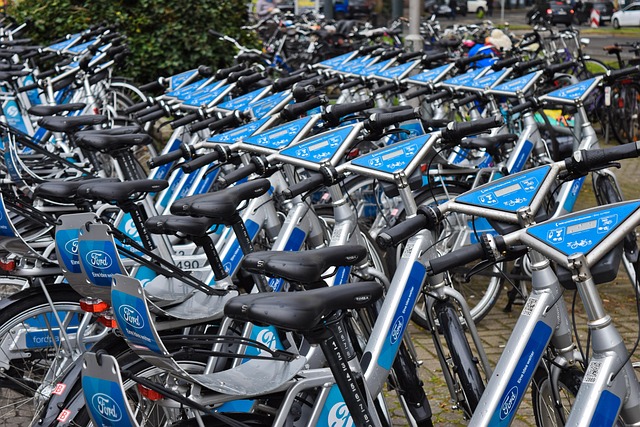Student rental markets in college towns are a dynamic segment of real estate, catering to temporary housing needs of college students. With diverse properties offering convenience and affordability, these markets are vital for both property owners and renters. While they boost local economies and foster diversity, safety concerns around burglary and vandalism persist due to high tenant turnover rates. Landlords face challenges balancing robust rental income with volatile turnover, requiring tailored management strategies and adherence to regulations. A sustainable student rental market can be achieved through collaboration between landlords and educational institutions, promoting fair practices, transparency, and environmental responsibility.
Student rentals in college towns present a unique real estate niche with distinct advantages and challenges. This article delves into the dynamics of these specialized markets, exploring how they benefit students through affordability and convenience while also contributing to local economies. We weigh the potential drawbacks, such as safety issues and tenancy fluctuations, and consider landlord perspectives. By balancing opportunities and regulatory considerations, we aim to illuminate the sustainable development of student rental markets, providing insights for both participants and communities.
- Understanding Student Rental Markets: A Unique Real Estate Niche
- Advantages for Students: Affordability and Convenience
- Pros for Local Communities: Economic Boost and Diversity
- Potential Drawbacks for Students: Safety Concerns and Unpredictable Tenancies
- Landlord Perspectives: Opportunities, Challenges, and Regulatory Considerations
- Balancing Act: Creating Sustainable Student Rental Markets
Understanding Student Rental Markets: A Unique Real Estate Niche

Student rental markets are a unique and specialized real estate niche that cater specifically to college students in search of temporary housing. These markets have evolved significantly over the years, driven by the increasing number of students opting for off-campus living. Understanding this dynamic sector is essential for both property owners and renters.
College towns often experience high demand for student rentals due to limited on-campus housing options and the allure of living closer to campus for a more immersive college experience. This demand creates a vibrant market characterized by diverse rental properties, from shared apartments to furnished homes designed specifically to accommodate students’ needs, such as proximity to public transport, nearby shops, and access to university facilities.
Advantages for Students: Affordability and Convenience

Student rentals in college towns offer a range of advantages tailored specifically to meet the needs and budgets of students. One of the most significant benefits is affordability. College towns often have vibrant student rental markets with options that are generally more cost-effective than traditional housing choices. Students can find shared accommodations, apartments, or sublets at prices significantly lower than what they would pay in private markets, making it easier to manage finances while covering essential living expenses.
Convenience is another key advantage. These rentals are often strategically located near campus, allowing students to walk or cycle to classes, saving time and effort. This proximity also means easier access to student services, libraries, and social activities, fostering a strong sense of community. Students can enjoy the bustling atmosphere of college towns while enjoying the convenience and affordability that student rental markets provide.
Pros for Local Communities: Economic Boost and Diversity

Student rental markets play a pivotal role in enhancing local communities, particularly in college towns. One of the significant advantages is the economic boost they provide. With a steady influx of students seeking accommodation, these rentals contribute to the town’s revenue through increased rental income for property owners. This financial injection can stimulate local businesses, from grocery stores and cafes to entertainment venues, as students become regular patrons. Moreover, student rentals foster diversity within the community. Students from various backgrounds, cultures, and economic statuses coexist, enriching the social fabric of the town. This mix promotes cultural exchange, broadens perspectives, and creates a vibrant atmosphere that can attract tourists and potential new residents alike.
Potential Drawbacks for Students: Safety Concerns and Unpredictable Tenancies

Student rental markets, prevalent in college towns, offer affordable housing options for students, but they also come with potential drawbacks. One significant concern is safety. Many student rental properties are located in areas with varying levels of security, which can expose tenants to unpredictable situations. Students might face risks such as burglary, vandalism, or even physical harm, especially if the property is not well-maintained or managed by untrustworthy landlords.
Additionally, the nature of student tenancies can be unpredictable. With high turnover rates due to students moving in and out each semester, maintaining consistent safety standards becomes challenging for landlords. This unpredictability can also affect the overall neighbourhood dynamics, as sudden changes in tenant demographics may lead to varied levels of noise, social activity, and community engagement, potentially causing friction between long-term residents and transient students.
Landlord Perspectives: Opportunities, Challenges, and Regulatory Considerations

Landlords often find student rental markets in college towns to be both lucrative and challenging. On one hand, these areas typically experience high demand for housing due to the influx of students, providing landlords with ample opportunities to maximize rental income. Student populations also tend to offer a consistent and reliable tenant base throughout the academic year, ensuring steady cash flow.
However, student rentals come with unique challenges. High turnover rates between semesters can disrupt long-term investment strategies. Moreover, managing student tenants may require specialized approaches due to their often flexible schedules, diverse cultural backgrounds, and varying levels of financial responsibility. Regulatory considerations further complicate matters, as landlords must navigate strict rules regarding safety, fire protection, and fair housing practices tailored for student rental properties.
Balancing Act: Creating Sustainable Student Rental Markets

In the dynamic landscape of college towns, the balance between meeting housing demands and fostering sustainable student rental markets is a delicate act. On one hand, student rentals play a pivotal role in accommodating the influx of young minds seeking knowledge and opportunities. They offer cost-effective solutions for students, often located close to campuses, which promotes accessibility and convenience. Moreover, these rental properties contribute to the vibrancy of local communities, with students adding a youthful energy to neighborhoods that might otherwise experience demographic shifts during academic years.
However, achieving sustainability in student rental markets presents its own set of challenges. Landlords face the daunting task of balancing profit margins with the need to provide affordable housing. This delicate equilibrium is further complicated by fluctuating student populations and economic cycles. To create a harmonious student rental market, stakeholders—from property owners to educational institutions—must collaborate. Implementing strategies such as transparent pricing, fair leasing practices, and promoting energy-efficient properties can ensure that student rentals remain accessible while encouraging environmental stewardship and long-term community growth.






